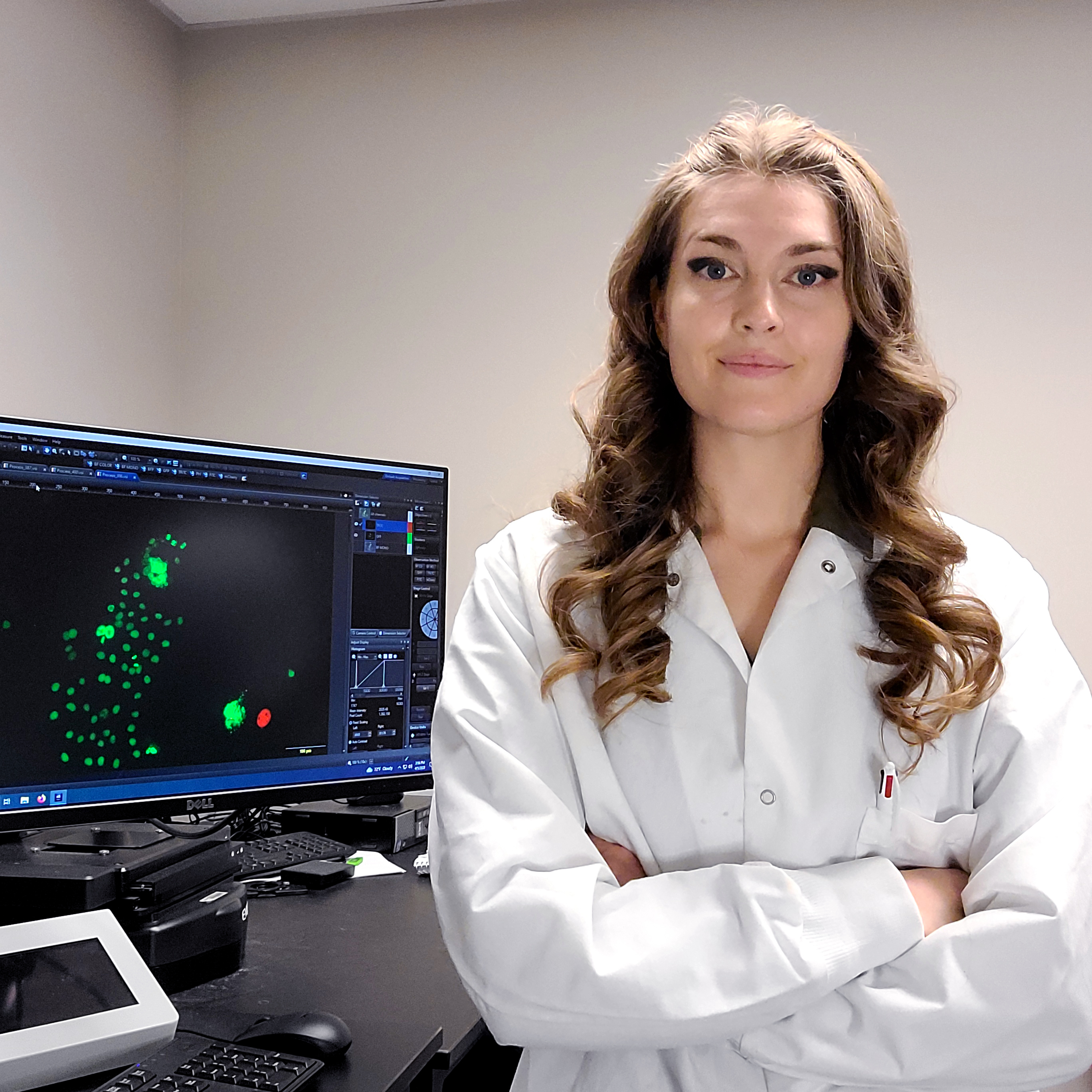Bioinformatics, Computational and Systems Biology
Therapeutic exploitation of interactions and asymmetric vulnerabilities in isogenic and coexisting TNBC cancer cell subpopulations
(B-48) Therapeutic exploitation of interactions and asymmetric vulnerabilities in isogenic and coexisting TNBC cancer cell subpopulations

Andrea L. Gardner
Graduate Student
The University of Texas at Austin, Texas, United States- TJ
Tyler Jost
Graduate Student
The University of Texas at Austin, United States - DM
Daylin Morgan
Graduate Student
The University of Texas at Austin, United States - AB
Amy Brock
Associate Professor
The University of Texas at Austin, United States
Presenting Author(s)
Co-Author(s)
Last Author(s)
Intratumoral heterogeneity is a hallmark of many tumor types which confounds treatment efforts. In a recent study, 11% of examined cancer cell lines were found to contain distinct subpopulations. These cell lines provide a unique opportunity to study coexistence and evolution in isogenic systems. We hypothesized that: 1. Distinct phenotypes which arise in isogenic populations coexist through specific interactions, and 2. Tumor evolution can be directed by targeting these interactions and exploiting asymmetric vulnerabilities. Here, we combine computational and experimental approaches to explore cell-cell interactions and asymmetric vulnerabilities in subpopulations of the triple-negative breast cancer (TNBC) cell line MDA-MB-231.
Materials and Methods::
Cell line single-cell RNA-sequencing (scRNAseq) data was generated in-house using 10X Genomics or downloaded from the Broad Institute’s single-cell portal. A computational pipeline was engineered to identify differentially expressed surface markers which effectively separate subclusters within isogenic cell lines. GFP and mCherry labeled populations of the TNBC cell line MDA-MB-231 were generated using a sleeping beauty transposase system. The surface protein ESAM was computationally identified and experimentally used to isolate subpopulations using fluorescence-activated cell sorting (FACS); ESAM+ from GFP; ESAM- from mCherry. Uniquely labeled subpopulations were cultured in isolation and coculture to assess subpopulation dynamics using live-cell imaging. Bulk RNA-seq was performed on subpopulations in isolation and in coculture to capture gene expression changes due to cell-cell interactions. Differentially expressed genes were identified via DESeq2 and altered pathways were identified with GSEA.
Results, Conclusions, and Discussions::
Two distinct and stable subpopulations from the triple negative breast cancer (TNBC) cell line MDA-MB-231 were isolated using the surface protein ESAM then characterized in isolation and in coculture. ESAM- cells (“231-EL”) had more epithelial-like features compared to the mesenchymal-like ESAM+ subpopulation (“231-ML”). In coculture, 231-ML cells increased the growth rate of the 231-EL cells (Fig. 1A). RNAseq identified activation of unique set of genes (Fig. 1B) showing enrichment for the hallmark epithelial-to-mesenchymal transition (EMT), inflammatory response, and hormonal response pathways. The EMT pathway was then experimentally explored. Direct TGFß stimulation induced morphological changes and increased migration in 231-EL cells, but slowed proliferation. However, addition of BMP4 to 231-EL cells increased proliferation and antagonism of BMP in coculture reduced the observed growth rate boost, confirming a role for BMP signaling in the interaction. We next screened for asymmetric therapeutic vulnerabilities and found that the TGF-ßRI inhibitor Galunisertib up to 20 µM had no effect on the 231-ML cells but potently inhibited the growth of 231-EL cells (EC50 = N.A. vs. 4 µM).
In this study, subpopulations from an isogenic TNBC cell line were isolated and their unique morphologies, growth rates, gene expression, interaction modalities, and therapeutic vulnerabilities were characterized. We discovered that the more mesenchymal subpopulation increases the growth rate of the more epithelial subpopulation in part through BMP signaling and found that Galunisertib asymmetrically inhibits the growth of the more epithelial subpopulation. Understanding the phenotypes, mechanisms of coexistence, and asymmetric vulnerabilities which emerge in isogenic populations may help inform novel treatment strategies for patients with heterogeneous tumors.
Acknowledgements (Optional): : The authors are grateful for support from the National Institute of Health (1R01CA226258, 1U01CA25354 and 1R01CA255536 to AB, and 1F31CA268833 to AG) and the Texas 4000 Foundation Cancer Research Seed Grant program (to AB).
References (Optional): :
